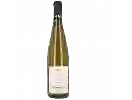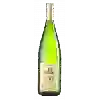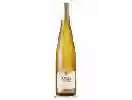The Domaine Zinck of Alsace

The Domaine Zinck is one of the best wineries to follow in Alsace.. It offers 33 wines for sale in of Alsace to come and discover on site or to buy online.
The Domaine Zinck vineyard, located in the Alsace region of France, offers a unique opportunity to taste perfectible viticultural excellence. Owned by the Zinck family for over 350 years, the estate is situated between the towns of Ribeauvillé and Kayerberg on the Grosbacher slopes. The climate is specifically warm and the clay and limestone soils are ideal for planting. The vineyards consist of pinot noir, Gewurztraminer, riesling, pinot gris and sylvaner for white wine and pinot noir, sylvaner, pinot gris, muscat and sémillon for red wine. For more than five generations, the Zinck family has risen to the challenge of crafting wines and dishes of exceptional quality. This tradition continues today with the integrity of the old approach and new technology. Modern technologies help to achieve the magical result of high-level, high-quality production. Soil training practices are applied with great care and interest while exercising environmentally friendly management. Domaine Zinck offers five different wine series. The wines from the basic range are called "The Classics". The Premium range wines are called "The Eternals". The luxury range wines are known as "The Entity". The organic wines are called "The Souvenir" and their specialized wines are called "The Mysterym". Domaine Zinck has won several awards over the years and the wines are highly appreciated by wine connoisseurs. The House organizes tours and wine tastings every year and has an online shop for those who prefer to buy their wines abroad. Domaine Zinck offers visitors and winemakers the opportunity to immerse themselves in the pleasures of good wine and oenology. They offer tours in their vineyards and a variety of guided tastings for those wishing to explore their wines.
























